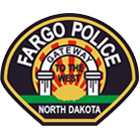
Sobriety Checkpoints
The purpose of sobriety checkpoints is to deter drunk driving. We send out a news release announcing each checkpoint in advance. Some studies indicate that regularly conducted sobriety checkpoints reduce alcohol related fatality crashes by up to 24%. This reduction is a result of people choosing not to drive after drinking because they know a checkpoint is being conducted. On average, four drivers are arrested for DUI at each checkpoint, but more importantly, many others are deterred from driving drunk simply because they were made aware of the sobriety checkpoint.
Are sobriety checkpoints constitutional?
In 1990, the United States Supreme Court ruled sobriety checkpoints are constitutional. The court determined the need to combat drunk driving outweighed the brief intrusion on a motorist passing through a checkpoint. Although some individual states have ruled in opposition to sobriety checkpoints, the North Dakota Supreme Court has ruled in favor of the checkpoints, making them legal in this state.
Is it illegal to make a turn to avoid the checkpoint?
Some judges have interpreted North Dakota law to suggest a motorist must be given an opportunity to avoid a checkpoint if they so choose. Therefore, a "Sobriety Checkpoint Ahead" sign is posted in the area immediately ahead of the checkpoint. This allows a motorist to make a legal turn and avoid passing through the checkpoint.
How do you decide where to have the checkpoint?
Several factors are considered when determining the checkpoint location. These include the number of police officers available to staff the checkpoint, the volume of traffic, the expected duration of the checkpoint, and the time of day the checkpoint is to be conducted. A checkpoint could be conducted on a busy street, utilizing a significant number of officers (usually between 12 and 15) for a duration of four hours, or it could be conducted on a much smaller scale, possibly in a less-traveled area using a smaller number of officers (three or four) for a duration of one hour.

